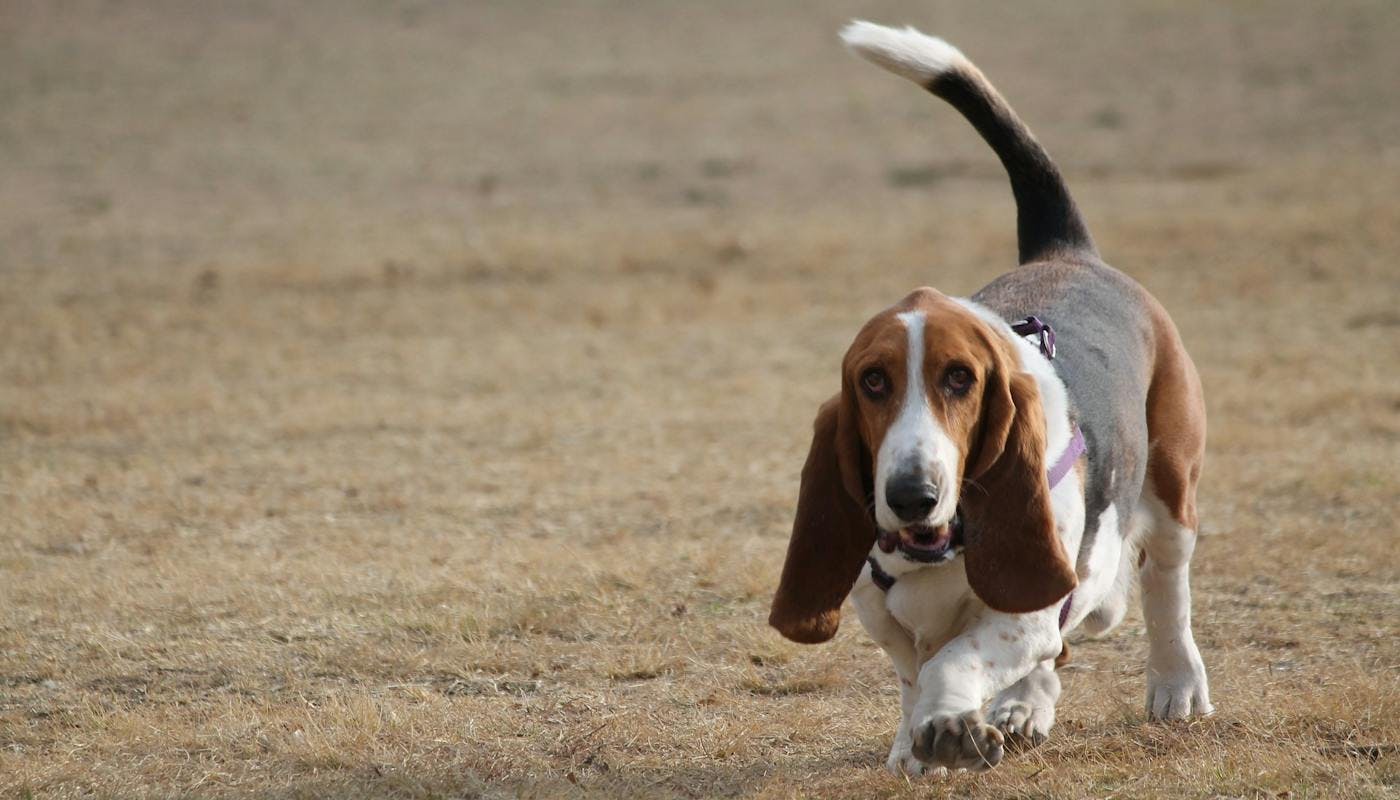What Is Ectropion In Dogs?
Have you noticed that your dog’s lower eyelids have begun to droop or roll out? They might have ectropion. And though the condition can look worrying, it’s actually a perfectly normal development in some dog breeds.
In this blog we’ll explain what ectropion is, what causes the condition, how it can be treated, and which breeds are most susceptible.
What Is Ectropion?
Ectropion is a condition that affects the lower eyelids, causing them to drop, evert, or ‘roll’ outwards. It can affect both or just one of the eyes, and tends to expose the inner surface of the eyelid that would usually cover the eyeball.
By exposing this conjunctival tissue, it can cause the area to dry out leading to infections like conjunctivitis, corneal inflammation, and other issues in the cornea – like scarring or drying – that can lead to impaired vision.
Which Breeds Are Most Likely To Have Ectropion?
As some dog breeds are more likely to have lower eyelids that droop outwards, these breeds are more likely to have higher incidences of congenital ectropion.
- Basset Hounds
- Bloodhounds
- Bulldogs
- American Cocker Spaniels
- Chow Chows
- Cocker Spaniels
- English Cocker Spaniels
- English Springer Spaniels
- Great Danes
- Mastiffs
- Newfoundlands
- Saint Bernards
Are There Other Causes Of Ectropion?
Though congenital ectropion is generally not seen as a problem – as long as infections can be avoided – owners of dog breeds who display the condition due to their breed don’t need to be too worried.
However, dogs of any breed and any age can develop acquired ectropion. This means the condition is caused by something other than a genetic trait, and can be a symptom of something more serious. Diseases that cause the eyelids to sag and cause acquired ectropion include:
- Hypothyroidism
- Facial nerve paralysis
- Neuromuscular disease
- Chronic infection or inflammation in the eye tissue
- Scarring secondary caused by injury
- Surgical overcorrection of ectropion
How Is Ectropion Diagnosed In Dogs?
Ectropion usually occurs in dogs under one year old. The most common side effects of the condition are sagging of the eyelid, mucus discharge in the eyelid, red or inflamed eyes, tears, and itching.
Due to these signs, vets are usually able to make a diagnosis by a simple visual examination. However in dog breeds less likely to develop congenital ectropion blood and urine tests may be performed to check for other potential causes. This could include muscle and nerve biopsies, antibody testing, checking for hyperthyroidism, and corneal staining to check for ulcers.
How Is Ectropion Treated?
In mild cases, vets will prefer to avoid surgical treatment and generally administer eye drops and other ointments to prevent dryness in and around the eyes. If ulcers are found, dogs might be prescribed antibiotics. And in severe cases, surgery might be recommended to shorten the eyelid.
This is a fairly common surgery that involves correcting the contour of the eyelid, and is usually successful. However, it’s often performed in two parts to prevent overcorrection which can happen due to swelling and infection near the eye. If the eyelid is over-corrected it can begin to roll inwards and lead to entropion.
What Is The Prognosis For Ectropion?
The prognosis – particularly congenital ectropion – is good. It’s not a life-threatening condition and can usually be treated successfully using medical therapies for surgery for severe cases. However, due to the likelihood of infections like conjunctivitis, dogs prescribed eye drops and ointments may need to use these treatments for life.
If the condition leads to corneal scarring it can cause visual impairment, and if it’s a symptom of another disease the side effects can be more serious.
How To Prevent Ectropion
Because the most common incidences of ectropion are hereditary, it’s recommended that dogs known to have severe congenital ectropion should not breed. This is to avoid the increased need for surgical corrections.
Acquired ectropion is usually caused by traumatic injury, which can be harder to avoid as it is accidental. However, always keeping your dog on a leash is a good precaution to prevent injury.
